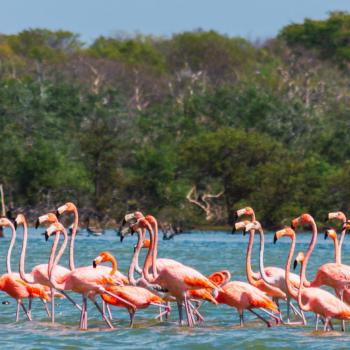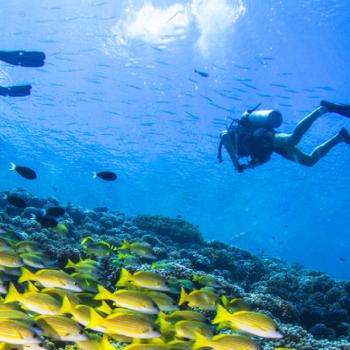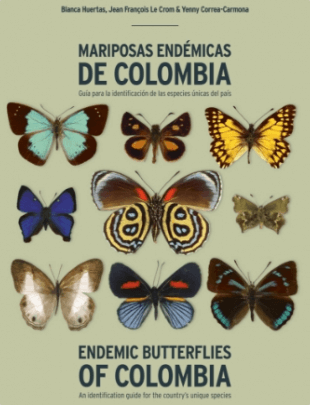Things to do in Bogotá
Bogotá is Colombia’s lively and bustling capital. Home to more than eight million people, there are plenty of Bogotá things to do to suit every taste.
Standout examples are the city’s famous Gold Museum, which houses the world’s largest collection of gold artifacts, taking care to protect and preserve this cavernous example of pre-Columbian treasure.

Colonial houses in Boyaca department
Photo by: Malajiz
Visitors to Bogotá keen for fresh air also enjoy climbing Bogotá Monserrate mountain, particularly at the weekend – following in the footsteps of pilgrims up its winding Andean path, or taking the popular cable car to enjoy one of the best views of the city.
No trip to the Colombian capital would be complete without exploring the narrow streets of La Candelaria neighborhood, which as well as boasting charming colonial architecture and outstanding museums has earned a global reputation for its street art.
Bogota is fast becoming known as a gastronomic destination too, and is filled with award-winning restaurants experimenting with various cuisines, as well as hosting numerous cultural, music and art festivals and fairs throughout the year.
Don’t forget to explore the green surrounds of Bogotá too
The city of Bogotá is such an enticing place to visit, it would be easy to spend your time soaking up all the delights the capital has to offer.
But it’s important, too, to explore some of the nearby natural areas that feel like they’re a world away from the busy metropolis, when they are right there on its doorstep.
Chicaque National Park is an enchanting cloud-forest reserve just thirty minutes south of the city. It offers opportunities for hiking, horseback-riding, bird-watching and camping, with lodging options including its distinctive treehouse.
Not far away is Chingaza National Natural Park, which provides the habitat for rare flora and fauna, including the much-loved spectacled bears, visible on its hills.
Visitors to Chingaza also have the chance to hike among curious high-altitude plants, including the water-capturing frailejons, with their distinctive yellow flowers.
The vast savanna that surrounds the city of Bogotá extends in every direction except its eastern side, where the capital is bordered by an imposing mountain range, home to Monserrate mountain.
Bogota’s savanna is part of the “altiplano cundiboyacense” – the high-altitude plains that form part of the departments of Boyacá and Cundinamarca too.
You may also be interested in: Tourism in Bogota: a city for experiencing culture
Here we offer several reasons to explore and visit these fascinating nearby areas:
Camping, fishing and hot springs in tranquil Boyaca
Boyacá department is defined by its stunning scenery, in a cool climate that makes it ideal for outdoor adventures. Locals are known for being kind and hospitable, and their cuisine is marked by fresh, locally-grown ingredients. In fact, the entire “altiplano” is dotted with agricultural land.
Visitors to Boyacá are impressed by the diversity of its wildlife and its colonial heritage, including centuries-old churches that are often the centerpieces of the villages sprinkled across its countryside.
Between the capital city of Tunja and the town of Arcabuco, for example, there are five nature classrooms, by the name of Alabanza, designed to create environmental awareness, whilst between the small towns of Duitama and Nobsa, the Puntalarga vineyard offers visitors the chance to taste its renowned Marqués de Puntalarga wines.
There are impressive lakes for sports fishing, as well as rustic camping and comfortable glamping facilities, and memorable opportunities for hiking, including a picturesque stroll through the Ocetá Parámo, near the small town of Monguí.
Ocetá Paramo reaches heights of up to 3,950 meters above sea level and is one of the world’s most beautiful high moors. It’s a great place to spot the enormous Andean condor, which is the world’s largest flying bird. With a wingspan that can reach up to 10 feet long, it is easily visible in the sky.
Visitors keen to relax after all that adventure should head to the small town of Paipa, which is famous for its hot springs, as well as the Sochagota Lake and El Salitre House, a luxurious colonial hacienda that used to belong to the Jesuits.
Rock-climbing, farms and nature walks in Cundinamarca
Closer to Bogotá, Villeta in Cundinamarca is known throughout the region for its locally-produced panela (blocks of unrefined brown sugar made from sugar cane) as well as its temperate climate and opportunities for swimming.
San Antonio del Tequendama, La Libertad Farm and the Santa Cruz Zoo are great places to see wild and domestic animals, and take nature walks.
The town of Suesca is known for its imposing rocks and active rock-climbing culture, and the farms of Cogua, a so-called “experimental village” are home to horses, cows, pigs, geese, ducks and rabbits and opportunities for fishing.
Last but not least is the Panaca Sabana theme park, located between Briceño and Zipaquirá. Each of the park’s four thematic sections (cattle, porcine, canine and equine) showcases its own attractions and agricultural shows.
You may also be interested in: Behind the charms of the most welcoming country in the world























